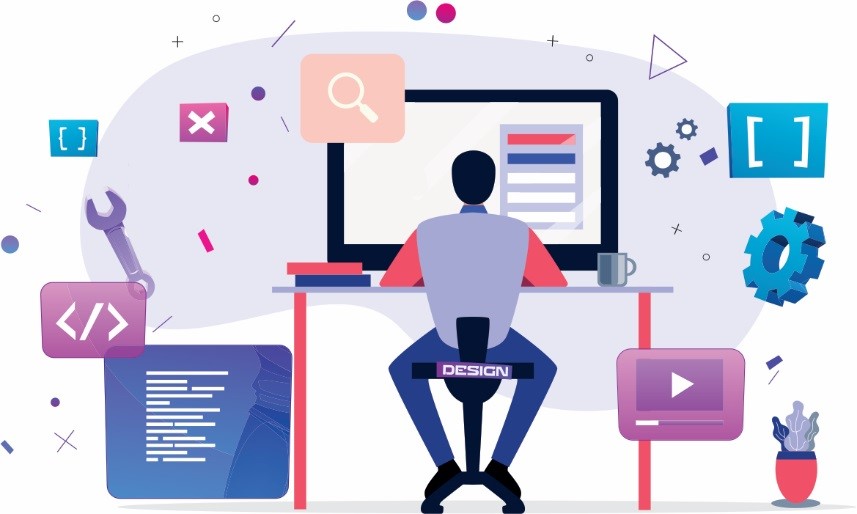Discover the Advantages of Nearshore Software Development for Your Team
Discover the Advantages of Nearshore Software Development for Your Team
Blog Article
Devoted Developers vs. In-House Teams: Which Is Right for You?
The choice in between utilizing committed programmers and keeping an internal group is a significant one that can influence the trajectory of your tasks and overall business approach. Alternatively, in-house groups contribute to a cohesive company society and a nuanced understanding of long-lasting goals.
Recognizing Committed Developers
The growing demand for specialized abilities in the tech market has brought about the introduction of dedicated programmers as a sensible service for many companies. These specialists are usually contracted on a project basis, enabling companies to leverage specific know-how without the long-lasting dedication connected with full-time hires. Dedicated designers are typically embedded within a customer's group, supplying versatility and scalability to satisfy project requirements.
This version permits organizations to access a global skill swimming pool, which is specifically advantageous in a rapidly developing technological landscape. Devoted designers can be sourced from various geographical locations, ensuring that firms can discover the right ability at competitive prices. They commonly bring a riches of experience and expertise, having dealt with diverse projects throughout different markets.
Moreover, specialized designers can focus solely on the tasks handy, enhancing efficiency and performance. They are equipped to incorporate effortlessly right into existing process, collaborating very closely with in-house teams to achieve job goals. This strategy not just reduces the burden of recruitment and training but likewise permits companies to remain dexterous, adapting rapidly to changing market needs and technical advancements.
Advantages of In-House Teams

Moreover, internal teams often tend to have a deeper understanding of the business's goal, worths, and goals. This placement can enhance worker interaction and inspiration, as staff member really feel more attached to their job and the company's success. Furthermore, having a dedicated in-house group permits far better alignment of strategies and objectives, as these members are constantly concentrated on the company's concerns.
Internal groups likewise promote quicker decision-making procedures, as they can react more swiftly to difficulties and adjustments. The established connections and knowledge with firm methods enable structured operations and lowered miscommunication. Inevitably, the combination of a cohesive culture, positioning with business objectives, and effective communication makes in-house teams a valuable property for numerous companies, particularly those seeking to cultivate long-term development and development.
Price Considerations
When evaluating expense considerations, both dedicated designers and internal teams present distinct monetary implications for organizations. Engaging specialized programmers normally entails a pay-per-project or hourly rate design, which can be economical for organizations with changing task demands. This strategy enables adaptability in scaling sources up or down, guaranteeing that companies only spend for the solutions they require.
On the other hand, internal groups involve fixed expenses, consisting of wages, advantages, and overhead expenses such as workplace and devices. While this design uses higher control and immediate accessibility of resources, it may cause greater lasting expenses, especially if the workload does not justify a permanent personnel.
Additionally, firms ought to take into consideration the surprise expenses connected with employment and training of internal workers, which can further stress budget plans. In some situations, the time and sources spent on handling an in-house team can diminish the organization's core business purposes.

Project Monitoring and Versatility
Task monitoring and adaptability are vital aspects that influence the choice in between dedicated designers and in-house groups. Dedicated groups usually have actually developed processes for managing projects successfully, leveraging certain methodologies like Agile or Scrum, which promote iterative progress and adaptability.

Inevitably, the selection between internal teams and dedicated programmers rests on the wanted level of versatility and the certain task administration requirements. Firms must examine their functional dynamics, task complexity, and resource availability to establish which choice lines up finest with their calculated objectives.
Making the Right Selection
Choosing the appropriate growth strategy-- specialized developers or in-house groups-- requires a cautious assessment of various elements that align with a business's tactical goals. hire dedicated developers. First, consider the nature of the task. Committed designers may be extra appropriate if it demands specialized skills or a quick scale-up. On the other hand, internal teams can offer far better continuity and assimilation with existing personnel.
Next, review your budget. Dedicated developers typically present an economical solution for temporary projects, while in-house groups might sustain higher long-term expenses because of wages, advantages, and overhead prices. Assess blog the degree of control and cooperation preferred; internal groups usually promote stronger communication and placement with business society.
Additionally, take into consideration the time frame. If prompt outcomes are needed, committed developers can be onboarded rapidly, whereas constructing an internal group takes some time for recruitment and training. Finally, weigh the lasting vision of your company. Spending in an internal team may produce much better returns over time if continual development is important. Eventually, the decision depends upon a detailed analysis of these factors, guaranteeing placement with your firm's general purposes and functional demands.
Verdict
In final thought, the choice between internal groups and specialized developers hinges on job requirements and organizational goals. Committed programmers give adaptability and specific competence, making them appropriate for short-term campaigns. On the other hand, in-house groups grow a natural culture and deeper alignment with lasting objectives. Careful assessment of spending plan constraints, task timelines, and preferred control levels is essential for determining one of the most proper technique, ensuring placement with strategic concerns and operational effectiveness.
The decision in between making use of dedicated programmers and preserving an internal group is a significant one that can impact the trajectory of your tasks and total organization method.Task monitoring and versatility are important aspects that influence the option in between dedicated designers and internal teams. hire dedicated developers.In comparison, in-house teams might excel in maintaining a regular project management framework due to their familiarity with the organization's society and long-term objectives. Committed programmers commonly present an affordable solution for short-term tasks, read this post here while internal teams may sustain higher long-lasting expenses due to incomes, advantages, and expenses expenses.In conclusion, the decision in between committed designers and internal groups pivots on task requirements and organizational objectives
Report this page